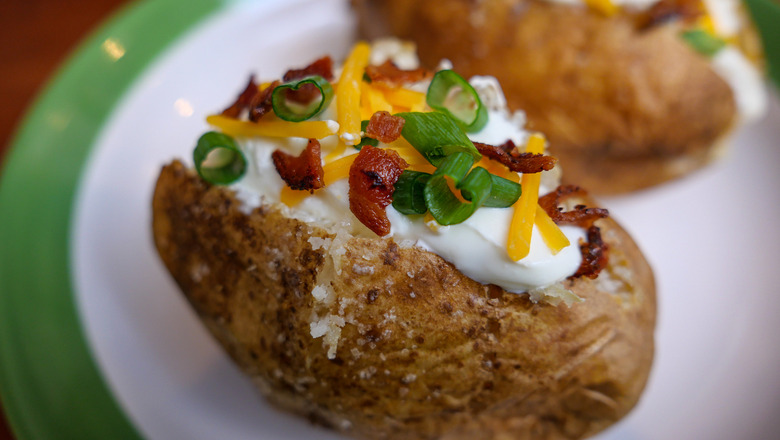Baked potatoes are a classic, a simple and hearty dish that can be used in countless ways. Although it might seem simple, the key to perfect baked potatoes is not just putting them in the oven and waiting. Mastering the basics of baking potatoes can enhance your entire meal.
This guide will teach you everything you need to make a perfect baked potato, from choosing the right kind of potato to seasoning just right to getting that fluffy inside with a crisp skin.
How To Choose The Right Potato
It all starts with selecting the best variety. Russet potatoes make the perfect baking potato. Their high starch and low moisture content make them ideal for crispy outsides and fluffy insides. Avoid waxy potato varieties such as red and fingerling, which work better when boiled or roasted.
Look for firm russet potatoes between medium and large sizes with no soft spots or sprouts. The uniform size will ensure even baking.
Dry Well After Cleaning
Clean the potatoes thoroughly with running water before baking. The skin on potatoes can be eaten and is tasty when crisped. However, you should clean it thoroughly, especially if you are not peeling them. To dry potatoes, use a towel to completely dry them after scrubbing. Instead of roasting, moisture may cause the skin to steam, depriving it of its crispy texture.
Don’t Skip The Poke
It is important to poke the potato several times with a sharp fork. This step is often overlooked when making a baked potato. Poking the potato allows the steam to escape from it as it cooks, helping prevent the potato from burst in the oven. Four to six pricks, evenly distributed around the surface, are usually enough.
Use Oil And Sea Salt To Add Flavor
Even though it isn’t mandatory, adding oil to your potatoes and sprinkling some coarse salt will improve their taste and texture. The salt enhances the potato’s flavor and adds to its crispness. You can use olive or avocado, but even neutral oils will work.
Perfect Oven Temperature And Timing
Get the oven hot, about 425 degrees Fahrenheit (220 degrees Celsius). Put the potatoes straight onto a foil-lined baking sheet or oven rack. If they are cooked directly on a rack, air may flow around them and encourage even crisping.
Give your potatoes 45 to 60 minutes in the oven. Their size will determine this. You’ll know they’re ready when you can easily puncture the center with a knife.
Finish the final 5-10 minutes baking with the door slightly ajar to get extra-crisp skin. This allows moisture to escape more quickly.
Rest Briefly
Allow your potatoes to cool for approximately five minutes after they have been taken out of the hot oven. This will help them become more fluffable and easier to slice. Use a knife to make a long slit on top. Gently press the ends together to open the pouch.
Before adding your toppings, you can use a potato fork to fluff its interior.
Top Your Way
The beauty of a baked potato lies in its versatility. Classic toppings like sour cream, shredded cheese, and butter never go out of fashion. But you can make your baked potatoes a full meal using creative options such as:
- Chili and cheddar
- Broccoli & melted cheese Sauce
- Salsa, guacamole & beans for a Tex-Mex twist
- Pulling pork or grilling chicken with barbecue sauce
The possibilities are endless. This is a great recipe to create comforting food with leftovers.
Pre-Heating And Reheating Tips
Baked potatoes can be made in advance, whether you’re meal planning or hosting dinner. They can be stored in an insulated container in the fridge for up to four weeks. Avoid the microwave when reheating, as it may make the skin rubbery. Warm them instead in a 325°F oven until they’re heated.
You can also freeze potatoes by wrapping them in foil and freezing them in freezer bags. When dinnertime arrives, defrost the potatoes overnight in the refrigerator before reheating the meal in the oven.
Conclusion
By properly choosing and seasoning the potato, this unassuming vegetable can be turned into a delicious, crowd-pleasing entrée. After you understand the fundamentals, try experimenting with other toppings. The potato can be served as a substantial dish or as a main course. Whichever approach you use, your next baked meal will be exceptional.









